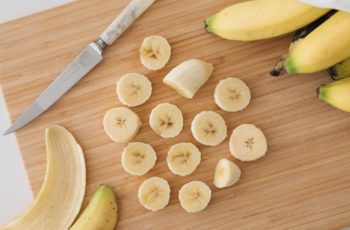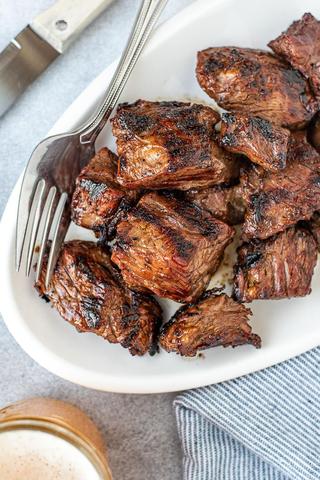
“Spice up your dishes with the perfect substitute for parsley! Discover an equally vibrant and fresh herb that will elevate your culinary creations to new heights. Say goodbye to blandness and hello to a burst of flavor that will delight your taste buds!”
9 Good Substitutes For Parsley
If you find yourself without any parsley or you are allergic to it, or simply don’t like the flavor, there are several herbs that can be used as substitutes. Chervil is a delicate herb that closely resembles parsley in appearance and flavor. Cilantro, despite its different taste, can be used as a substitute in many dishes that call for parsley. Carrot greens, which have a mild taste similar to parsley, can also be used as a substitute.

Celery greens are another option for substituting parsley, with their lighter flavor and thinner texture. Lovage, although harder to find, is very similar to parsley in taste and appearance. Beet tops offer a great substitution for herbs like parsley or basil in sauces such as pesto or chimichurri.
Arugula provides a peppery freshness that is reminiscent of parsley, making it a suitable substitute. Basil can also be used as a replacement for parsley but is best used as a garnish due to its distinct flavor profile. Oregano can work as a substitute when additional flavor is needed in soups and stews.
Coriander leaves, also known as cilantro or Chinese parsley, can be substituted for parsley due to their unique and spicy flavor. Dried parsley can also be used as a substitute when the herb will be mixed into the recipe for flavor rather than used as a garnish.
Easy Substitutes for Parsley
If you find yourself without fresh parsley or simply don’t enjoy its flavor, there are several easy substitutes you can use in your recipes. Chervil is a great option as it closely resembles parsley in both appearance and taste. Cilantro, despite its different taste, can also be used as a substitute for parsley in many dishes. Carrot greens and celery leaves, which belong to the same family as parsley, offer similar flavors and can be used as garnishes or ingredients in recipes. Lovage, although less commonly available, has a taste and appearance very similar to parsley. Beet tops and arugula provide alternative options with their own unique flavors that can mimic the freshness of parsley. Basil and oregano can also be used as substitutes for parsley in certain recipes, adding their own distinct flavors to the dish.
#1 Chervil
Chervil is the top substitute for parsley due to its similarity in flavor and appearance. It is often referred to as French parsley or garden chervil and is commonly used to flavor delicate dishes. While it looks nearly identical to parsley, chervil has a slightly milder flavor, so you may need to use a bit more when substituting it for parsley.
#2 Cilantro
Cilantro is a popular substitute for parsley due to its similar appearance and versatility in dishes. While cilantro has a distinct taste that some people love and others despise, it can be a suitable replacement for parsley if you enjoy its flavor. Cilantro is rich in vitamins A, B1, and C, as well as calcium, iron, and phosphorus. You can use cilantro to garnish the same dishes that call for parsley or incorporate it into pasta dishes and soups. As long as you don’t mind the taste and scent of cilantro, it can be freely used as a substitute for parsley.
#3 Carrot Greens
Carrot greens are a great substitute for parsley in recipes. While they may not be commonly used, the taste of carrot greens is very similar to that of parsley. They are mild in flavor and have a slightly thicker texture compared to parsley. To use carrot greens as a substitute, wash them thoroughly to remove any dirt and chop them just like you would parsley. You can sprinkle them over your dish as a garnish or incorporate them into any recipe that calls for parsley. Don’t let the misconception that carrot tops are poisonous deter you from trying this flavorful substitute.
#4 Celery greens
Celery greens can be a suitable substitute for parsley due to their similar taste and belonging to the same family. While parsley has a slightly stronger flavor, celery greens are more delicate and lighter in taste. They can be used as a garnish or added as an ingredient in various dishes without overpowering the flavors. The texture of celery greens is thinner than parsley, but they still provide a fresh and aromatic element to your recipes.
#5 Lovage
Lovage is a perennial plant in the same family as parsley and cilantro. The dark-green leaves of the lovage plant resemble cilantro and Italian parsley in shape and color. While it is most often used as a medicinal herb, lovage can also be substituted for parsley in recipes. The taste and appearance of these greens are very similar to parsley, making it an excellent alternative for those who do not have or do not enjoy parsley. However, lovage can be difficult to find and is seldom sold on the market.
#6 Beet greens
Beet greens are a great substitute for parsley, especially in traditional sauces like pesto or chimichurri. While many people discard beet tops, they are actually packed with vitamins and minerals and have a pleasant taste. They can be used as an alternative to parsley in recipes due to their similar flavor profile. Simply wash the beet greens thoroughly, chop them like parsley, and sprinkle them over your dish as a garnish or incorporate them into any recipe that calls for parsley.
#7 Arugula
Arugula is a salad green that can be used as a substitute for parsley. It has a similar peppery freshness and can add a vibrant flavor to your dishes. While the leaves of arugula are larger than parsley, you can finely mince them to mimic the texture and taste of parsley. Arugula works well as a garnish or an ingredient in recipes like chimichurri. It offers more protein, fewer carbs, and less fat compared to parsley, making it a nutritious option. However, keep in mind that arugula does have its own distinct flavor profile, so it may not be suitable for all dishes where parsley is called for.
#8 Basil
Basil can be used as a substitute for parsley, but it has a different flavor profile. While parsley has a fresh and slightly spicy taste, basil offers a more distinct and aromatic flavor. It is commonly used in Mediterranean-style recipes, so it can work well as a substitute for parsley in those dishes. However, due to its pronounced difference in flavor, it is best to use basil only as a garnish substitute for parsley rather than incorporating it into the recipe itself.
#9 Oregano
Oregano can make a good substitute for parsley in some recipes, particularly soups and stews. While there is a big difference in flavor and texture between these two herbs, oregano can add extra flavor when needed. Parsley has an earthy taste, while oregano has a tangy flavor profile. Although it’s not a direct substitute, oregano can work well as a stand-in for parsley in certain dishes.

FAQs
1. Can dried parsley be used instead of fresh parsley?
Yes, dried parsley can be used as a substitute for fresh parsley in recipes where the herb will be mixed in for flavor. However, it is not recommended to use dried parsley as a garnish, as it has a more muted flavor and aroma compared to fresh parsley.
2. What are some substitutes for parsley?
There are several substitutes for parsley that you can use in your cooking. These include chervil, cilantro, carrot greens, celery leaves, lovage, beet tops, arugula, basil, oregano, and coriander leaves. Each substitute has its own unique flavor profile and should be used according to the specific dish or recipe.
3. Can I use cilantro as a substitute for parsley?
Yes, cilantro can be used as a substitute for parsley in many dishes. While cilantro has a different taste compared to parsley, it can still provide a similar freshness and flavor when used as a garnish or ingredient in recipes such as pasta dishes or soups.
4. Are there any health benefits to using substitutes for parsley?
Many of the substitutes for parsley, such as cilantro and coriander leaves, contain high concentrations of antioxidants and vitamins that offer various health benefits. These substitutes can help reduce the risk of serious health conditions like diabetes, stroke, heart disease, and cancer.
5. Can I use dried herbs instead of fresh herbs in recipes?
Yes, dried herbs can often be used as a substitute for fresh herbs in recipes. However, it’s important to note that dried herbs have a more concentrated flavor than their fresh counterparts. As such, you may need to adjust the amount of dried herbs used in a recipe to achieve the desired flavor.
Is parsley similar to coriander or cilantro?
Parsley is similar to both coriander and cilantro in that they all belong to the same family of herbs. However, there are some differences in taste and aroma between them. Coriander leaves have a unique and spicy flavor, while parsley has a fresh and slightly spicy flavor. Cilantro, on the other hand, has a distinct taste that some people find reminiscent of soap. While all three herbs can be used as substitutes for each other in certain dishes, it’s important to consider the specific flavors when making the substitution.
Can dried parsley be used instead of fresh parsley?
Yes, dried parsley can be used as a substitute for fresh parsley in recipes. However, it’s important to note that dried parsley has a more muted flavor and aroma compared to fresh parsley. It is best used as a cooking ingredient rather than as a garnish. When using dried parsley as a substitute, you may need to use slightly more of it to achieve the same level of flavor as fresh parsley.
Dried parsley is a convenient option when you don’t have access to fresh parsley or when it is not in season. It can still provide some of the earthy and slightly spicy flavor that fresh parsley adds to dishes. Keep in mind that while dried herbs are a good pantry staple, they do have a shorter shelf life compared to their fresh counterparts, so be sure to check the expiration date before using.
Is parsley good for you?
Parsley is not only a flavorful herb that adds taste and texture to dishes, but it is also highly nutritious and beneficial for your health. It is rich in vitamin C, vitamin A, folate, and other antioxidants. These nutrients help reduce the risk of serious health conditions like diabetes, stroke, heart disease, and cancer.
In addition to its nutritional benefits, parsley also has anti-inflammatory properties and can aid in digestion. It may even help freshen your breath due to its natural deodorizing effect. Incorporating parsley into your diet can be a great way to boost your overall health.
Conclusion
In conclusion, if you find yourself without fresh parsley or if you simply don’t like the flavor, there are plenty of substitutes available. Chervil is the most similar to parsley in terms of taste and appearance, making it an excellent replacement. Cilantro can also be used as a substitute, but be aware that its taste is quite different from parsley. Carrot greens, celery leaves, lovage, beet tops, arugula, basil, oregano, and coriander leaves are all alternative options that can provide similar flavors and appearances to parsley. Dried parsley can also be used in recipes where the herb will be mixed in for flavor. Ultimately, the choice of substitute will depend on your personal preferences and the specific recipe you are preparing.
In conclusion, there are several great substitutes for parsley that can add a similar fresh and herbaceous flavor to your dishes. Whether you opt for cilantro, basil, or even celery leaves, these alternatives offer a versatile and tasty alternative when parsley is not available. Experiment with different herbs to find the perfect substitute for your recipes and enjoy the added depth of flavor they bring to your meals.
Learn More About Grilling
If you want to learn more about grilling, check out these other helpful resources!







